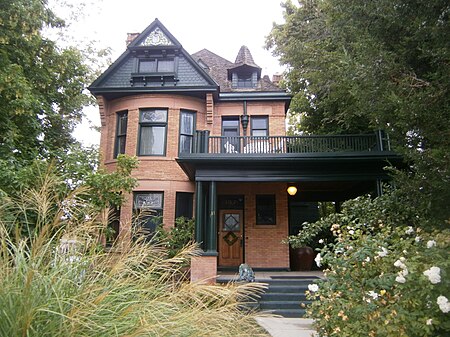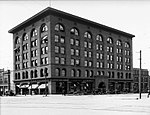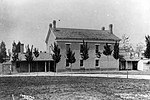Gibbs-Thomas House
Houses completed in 1896National Register of Historic Places in Salt Lake CityQueen Anne architecture in UtahUtah Registered Historic Place stubs

The Gibbs-Thomas House, at 137 NW Temple St. in Salt Lake City, Utah, was built in 1896. It was listed on the National Register of Historic Places in 1984.It was designed by architect Richard K. A. Kletting in Queen Anne style. It was inherited by Elbert D. Thomas, a U.S. Senator for Utah from 1932 to 1950, and was his only residence in Utah.
Excerpt from the Wikipedia article Gibbs-Thomas House (License: CC BY-SA 3.0, Authors, Images).Gibbs-Thomas House
West Temple, Salt Lake City
Geographical coordinates (GPS) Address Nearby Places Show on map
Geographical coordinates (GPS)
| Latitude | Longitude |
|---|---|
| N 40.772777777778 ° | E -111.89333333333 ° |
Address
Conference Center
West Temple 60 W
84150 Salt Lake City
Utah, United States
Open on Google Maps










